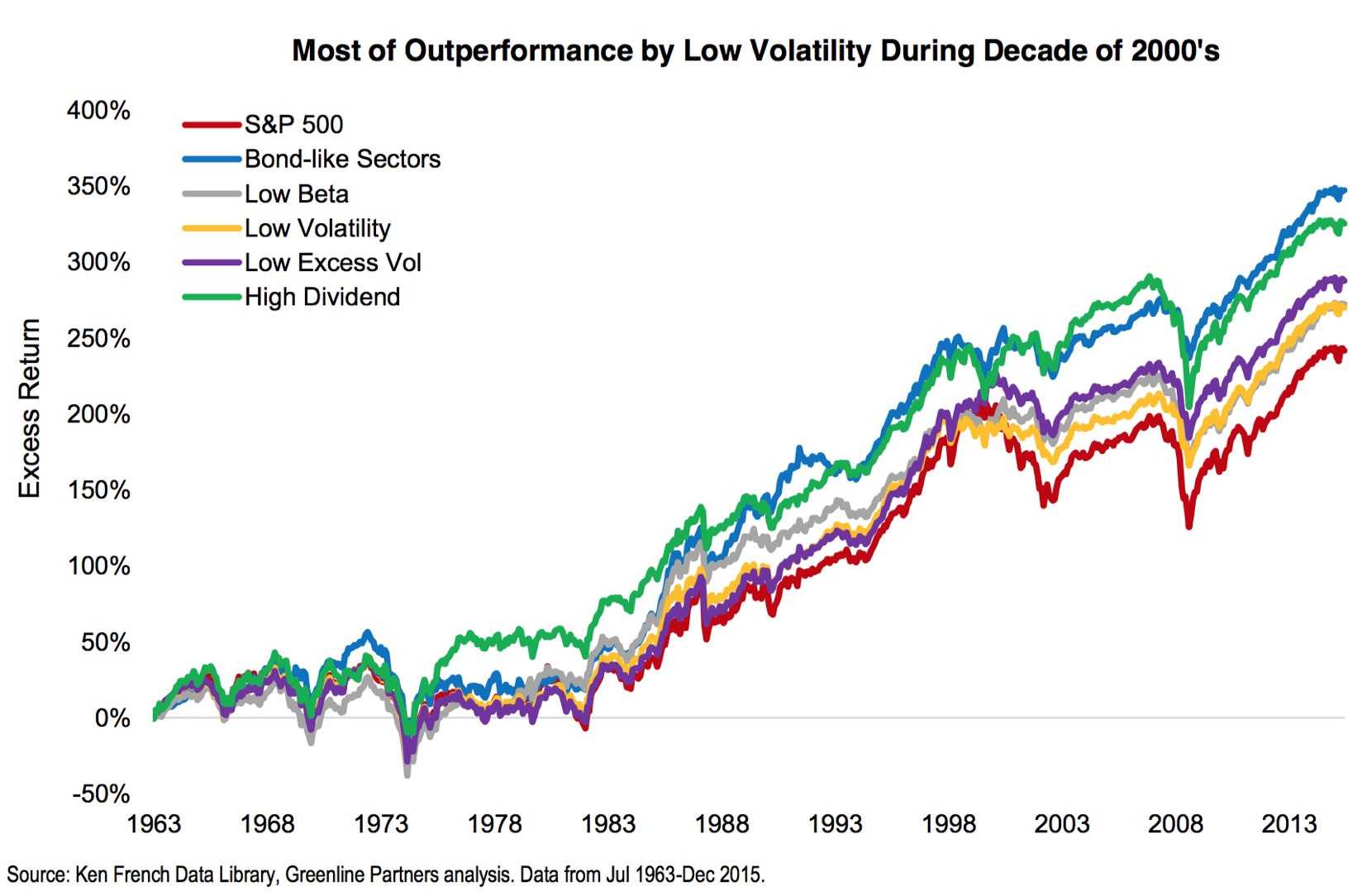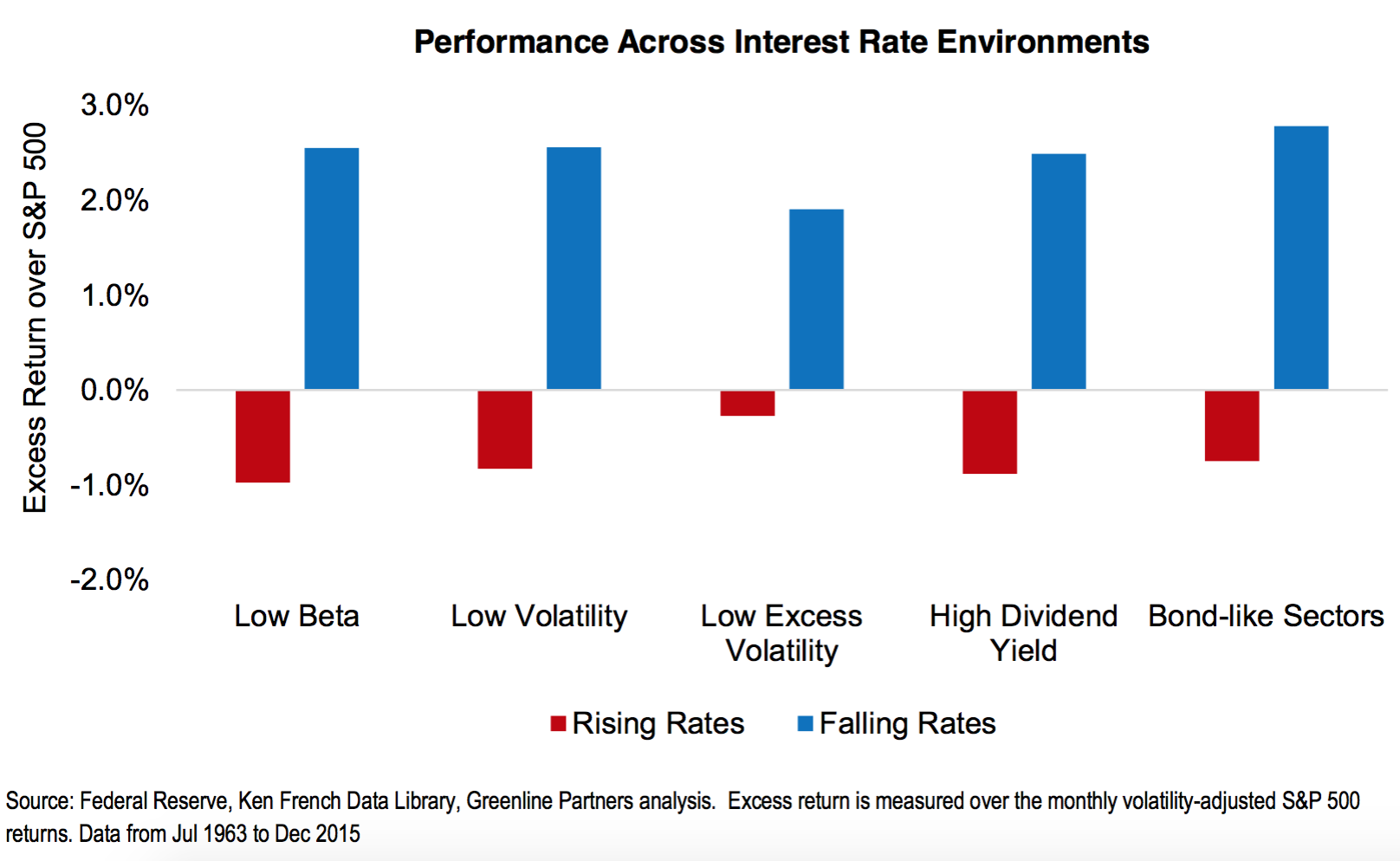Don’t mistake low-volatility strategies’ strong historical performance for return premiums, Greenline Partners has warned.
Low-volatility strategies generally allocate more to securities in defensive and bond-like sectors, such as tobacco, food staples, health care, telecoms, and utilities, the New York-based manager said. This tilt then lends to a bias to perform like bonds—and outperform in falling interest rate environments.
Greenline found low-volatility strategies outperformed the index by nearly 1% to 2% annually over the last 50 years. However, almost two-thirds of this period coincided with falling interest rates.
“We think this environment gave low-volatility investing a tailwind that will likely not repeat going forward,” the report said.

Low-volatility, high-dividend, and and other strategies focused on bond-like sectors outperformed the S&P 500 in the early 2000s, as economic growth expectations and interest rates dropped following the dot-com bubble crash and the global financial crisis.
From 2000 to 2009, these strategies beat the index by an average of 4.6% a year, Greenline found. Low-volatility portfolios in particular outperformed the S&P 500 by 3.7% over the same period.
On the other hand, the S&P 500 outperformed all low-volatility strategies in the late 1990s as the dot-com boom pushed high-volatility internet stocks to “bubble valuations.” Interest rates likewise jumped from around 5% to nearly 7%, the report said.
“Therefore future return expectations should be discounted especially if interest rates were to rise,” the report said. “Investors wanting lower-volatility equities may find lower cost, more transparency, and superior performance with bond-like sector ETFs [exchange-traded funds].”
Furthermore, Greenline added that low-volatility strategies’ high Sharpe ratios could be explained by “the portfolio diversification effect, not a return anomaly.”
Confusing risk with volatility can be dangerous, the report added, as it “can lead to seeing things that do not exist.”
“Investors are too often fooled by optimistic backtests and cherry-picked statistics,” the firm concluded. “In reality, low-volatility strategies are just a bet on companies with more stable earnings than average, which delivered similar returns as other equities.”

Related: Don’t Count Out the Low-Volatility Factor & Should You Be Worried About a Low Volatility Bubble?
